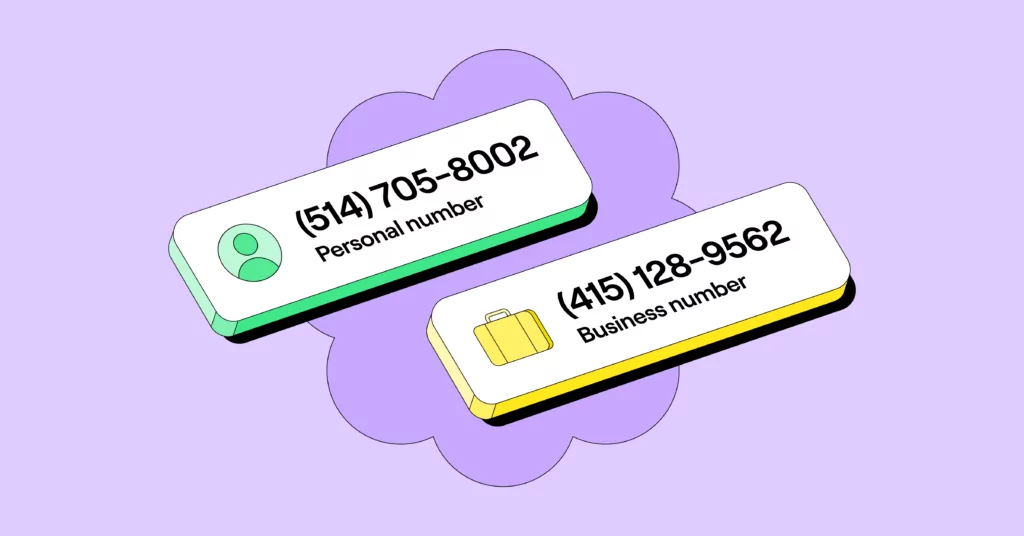Despite the rise of email, video conferencing, and chatbots, the phone remains the king of business communication. A 2023 study found 2,200 businesses, 13,000 consumers, and 600 decision-makers ranked voice as the preferred method of communication.
If you’re looking to find out how to get a business phone number — one you can use exclusively for work — your choices may seem clear on paper. But what you might not know is some options allow you to operate your business more smoothly and make customers a lot happier than others.
In this article, we share all the key benefits of getting a business phone system. We also cover the best phone technology you can use and how you can get a business number today. Let’s dive in!
Call me maybe — 4 types of business phone numbers to choose from
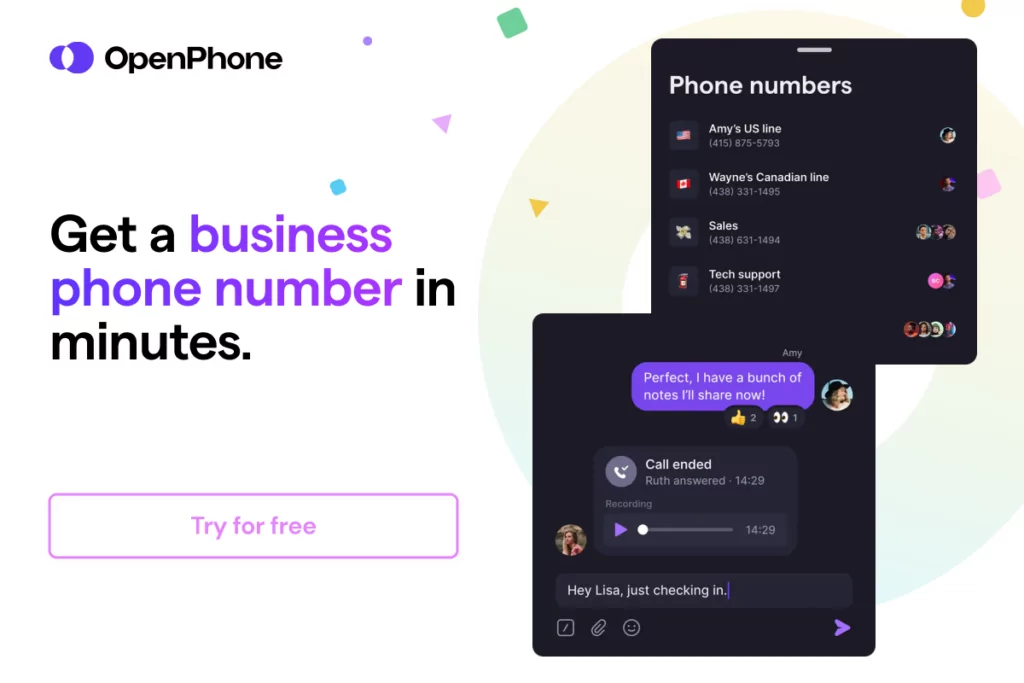
Before you learn how to get a business phone number, you need to decide what type of number you need.
Business phone service providers offer four kinds of numbers to support different business needs:
- Local business phone number
- Toll-free business phone number
- Vanity business phone number
- VoIP phone numbers
Let’s take a look at these in greater detail.
1. Local business phone number
Local phone numbers have area codes tied to specific cities or regions. These numbers allow you to build a local presence in specific markets you serve. When prospects and customers don’t have your phone number saved, they’re more likely to answer your calls if they recognize the area code associated with the local number.
While traditional phone plans only allow you to get phone numbers with your local area code, VoIP services let you choose area codes from any supported region (including those in other countries like Canada).
Typical cost: $15-$25 per month (pricing varies by provider)
2. Toll-free business phone number
Toll-free numbers allow your business to foot the bill on behalf of its callers. This lets current and potential customers reach out to your business — and not worry about the cost of international calls.
Toll-free phone numbers can help you build a global presence and attract customers who live abroad. They can also help you appear more professional, since larger businesses typically use them as the main corporate phone number. They also use toll-free phone numbers because customers aren’t charged for toll-free calls.
With North American toll-free numbers — which have dedicated area codes like 800, 888, and 844 — you can let customers in 20 countries across the continent call you without paying long-distance fees.
Typical cost: $15-$25 per month (pricing varies by provider). However, make sure you read the fine print with the provider you choose. Some providers restrict toll-free minutes in their plans, and purchasing additional minutes can quickly get expensive.
3. Vanity business phone number
Vanity phone numbers, often used as commercial phone numbers, are phone numbers spelling out a word or phrase. For example, if your vanity number is 1-800-CALL-SAM, customers can reach you by entering 1-800-225-5726 on their keypads.
Vanity numbers make it easier for people to remember your number — even if they scroll past your ad in seconds — and call or text your business.
Typical cost: $15-$50 per month (pricing varies by provider)
4. VoIP phone numbers
VoIP numbers, also called Voice over Internet Protocol numbers, are virtual phone numbers you can use to reach callers through an internet connection. All you need is WiFi and a device connected to the internet to make or receive calls from almost anywhere in the world.
Keep in mind you can use any of the number types above as VoIP numbers. In other words, you can own a toll-free VoIP number or a local VoIP number — or even have both on the same account.
Plus, phone services like OpenPhone make it so you can easily call and text from a business VoIP phone number using your computer, laptop, smartphone, or tablet. This means you don’t need to buy expensive hardware, and you don’t have to stay tied down to your desk.
Best of all, compared to cell phone numbers or landline numbers, VoIP phone numbers are just a fraction of the cost. With VoIP providers like OpenPhone, each member of your plan costs $15 per user per month.
Typical cost: $15-$25 per user per month (pricing varies by provider)
6 of the top phone systems to use to get your business phone number
If you’re looking to test out more than one phone solution before moving forward, let’s compare six of the top business phone systems below.
| Provider | Price | Unlimited calling to US & Canada | SMS/MMS to US & Canada | Shared phone numbers | Additional phone numbers |
|---|---|---|---|---|---|
| OpenPhone | Starts at $15 per user per month | ✓ | ✓ | ✓ | $5 per number per month |
| Google Voice | Starts at $16 per user per month(must have Google Workspace) | US customers only | US customers only | Requires upgrade (ring groups only) | X |
| Dialpad | Starts at $15 per user per month | ✓ | For US & Canadian customers only | ✓ | Requires upgrade |
| Ooma | Starts at $19.95 per user per month | ✓ | Requires upgrade | ✓ | $9.95 per number per month |
| Vonage | Starts at $19.99 per user per month (1-year contract) | ✓ | Local US & Canadian numbers only | Requires upgrade or $4.99 add-on for each call group | $14.99 per number per month |
| Grasshopper | Starts at $14 per month | ✓ | Local numbers only | X | $10 per number per month |
Find the best business phone systems for your small businesses
Here’s a quick overview of the top business phone systems for your small business.
1. OpenPhone: The best business phone system for small businesses
Pros
- Free calling and texting to the US and Canada
- Shared inbox options
- Easily add team members and numbers as your business grows
- Integrates with popular apps
- Works on existing devices
Cons
- Can’t verify accounts through two-factor authentication*
*Nearly all virtual phone numbers share this problem. For safety reasons, companies like Facebook, Uber, and Google rarely let you authenticate accounts through a virtual phone number.
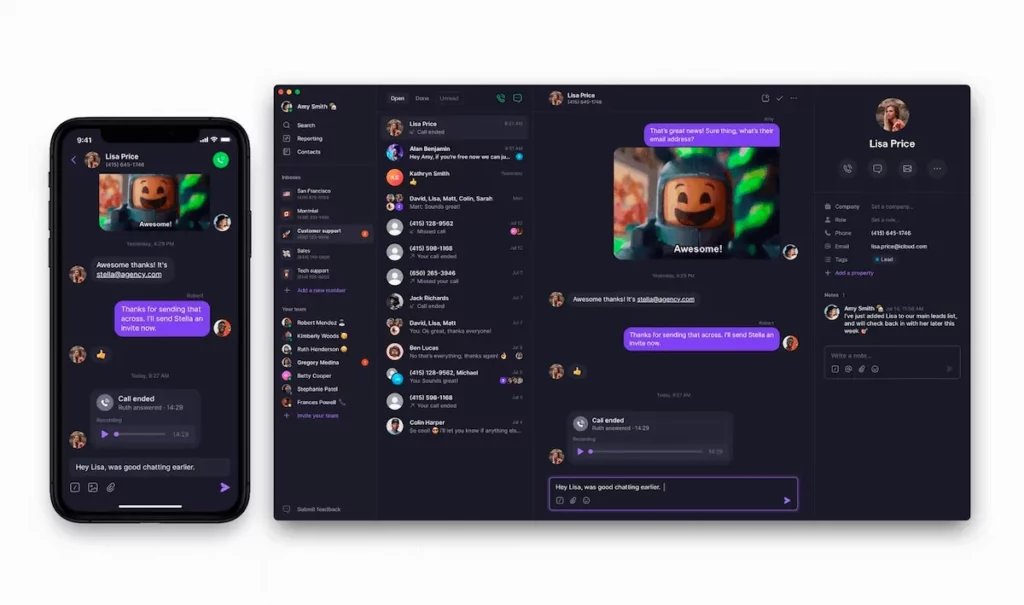
OpenPhone is the #1 business phone system as voted on G2 by thousands of other growing teams.
Every OpenPhone plan includes free calling and texting (SMS and MMS) to the US and Canada. You can also have access to local and toll-free numbers for the US, Canada, or North America.
You can easily add more users to your OpenPhone account as your business expands. Each user comes with one free phone number so you can support different departments, direct phone numbers for each person, or expand to multiple cities. Any additional numbers are just $5 per number per month.
That’s just the tip of the iceberg though, OpenPhone lets your team easily build a professional phone presence and save time using features like phone menus and auto-replies for texts. If you’re looking to continually improve your customer experience, OpenPhone also lets you record any calls and easily review conversations for potential coaching opportunities using AI-generated call transcripts.
With OpenPhone, you can also integrate with popular business apps to save time on repetitive tasks like sending appointment reminder texts. Don’t want to copy/paste information between different platforms, for example? You can automatically log OpenPhone conversations into your CRM using our HubSpot or Salesforce integration.
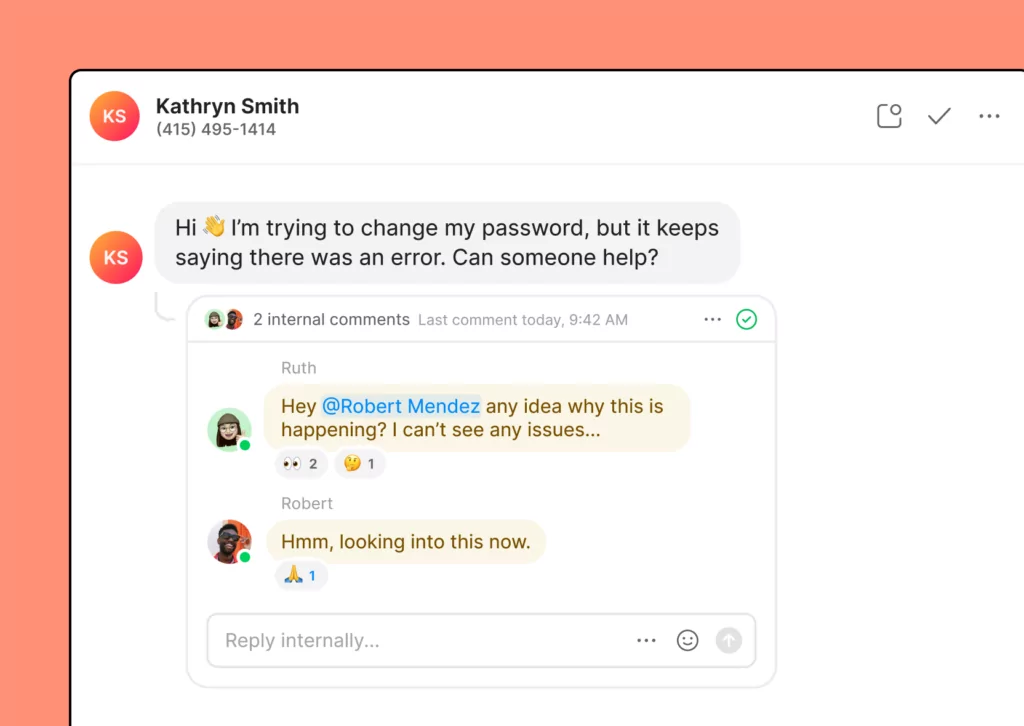
Users can also share existing numbers with team members to manage calls and texts. Everyone on a shared number receives the same calls and texts, so they can manage incoming messages without letting conversations fall through the cracks. Collaboration is easy with features like:
- Adding notes to contacts
- Starting internal threads
- Assigning tasks within the platform
Here’s what a few of our customers have to say:
“I needed a toll-free phone number for my business that routed to my mobile phone. OpenPhone was the best app I could find that accomplished this for me. Now I’m able to receive and track all business-related calls within OpenPhone, using my cell phone, but without it interfering with my personal cell phone usage. It’s basically a phone system within your phone.” — G2
“I recently started using OpenPhone for my business communication needs, and I must say it has been an absolute game-changer. It offers excellent call quality, a dedicated business phone number, a user-friendly interface, cross-device compatibility, and a range of useful features. With its affordability and top-notch customer support, OpenPhone is undoubtedly the go-to solution for any business in need of a reliable phone application. I highly recommend giving it a try.” — G2
You can see why OpenPhone is the #1 business phone system rated on G2 by signing up for our free seven-day trial.
Key features of OpenPhone
- Multiple local (US and Canadian phone numbers) and toll-free numbers
- Shared phone numbers
- SMS and MMS support
- Scheduled text messages and auto-replies
- Voicemail to text transcriptions
- Automatic and on-demand call recording options
- Ability to set business hours that control when you’re available to receive calls
- Mobile apps available for iOS and Android
- Web-based app for all browsers
- Desktop apps for Mac and Windows
- Zapier, HubSpot, Salesforce, Slack, and email integrations
OpenPhone pricing
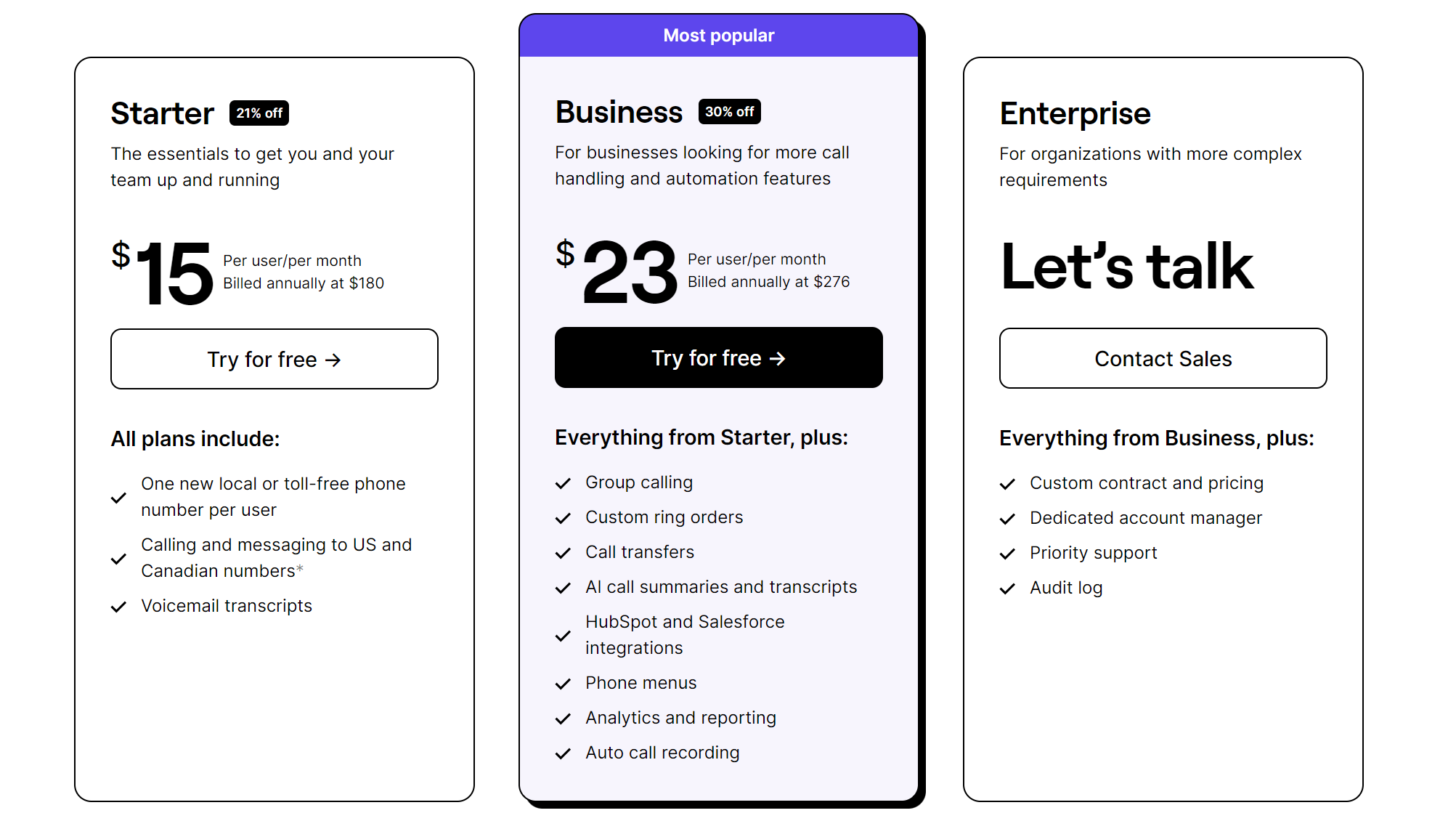
OpenPhone fully understands that your business needs change as you grow. That’s why we offer three different price plans so you can choose the right features for your needs. You can pick the one that fits you now, and if you need to change later, you can upgrade in minutes. It’s all about making things easy for you as your business gets bigger.
Here’s what our three plans look like up close:
Starter
- Starting at $15 per user per month
- Includes call recordings, auto-attendants, scheduled texts, AI-suggested text responses, and more
Business
- Starting at $23 per user per month
- Unlocks call transfer, logs and analytics, HubSpot CRM integration, call transcriptions, and more
Enterprise
- Custom pricing for a custom plan
- Unlocks a dedicated account manager to tailor a plan to your team’s needs
How to obtain a business phone number with OpenPhone
You can get a business phone number with OpenPhone in three simple steps:
- Sign up for an account with OpenPhone — when you sign up, you can try out OpenPhone free for seven days.
- During signup, select your city or area code in the US or Canada to pick your phone number or pick a North American toll-free number.
- Verify your account with an existing phone number and a credit card.
You now have a business phone number. If you run into any issues during the signup process, fill out this form to reach our support team.
2. Google Voice: The best solution for teams that use Google Workspace
Pros
- Handy for businesses already using G Suite products
- Call routing and custom greetings for personalized communication
- Multi-level auto attendants and ring groups for efficient call management
Cons
- Texting only available to US customers
- Lacks toll-free numbers and auto-reply capabilities
- Requires a paid Google Workspace plan in addition to the business number
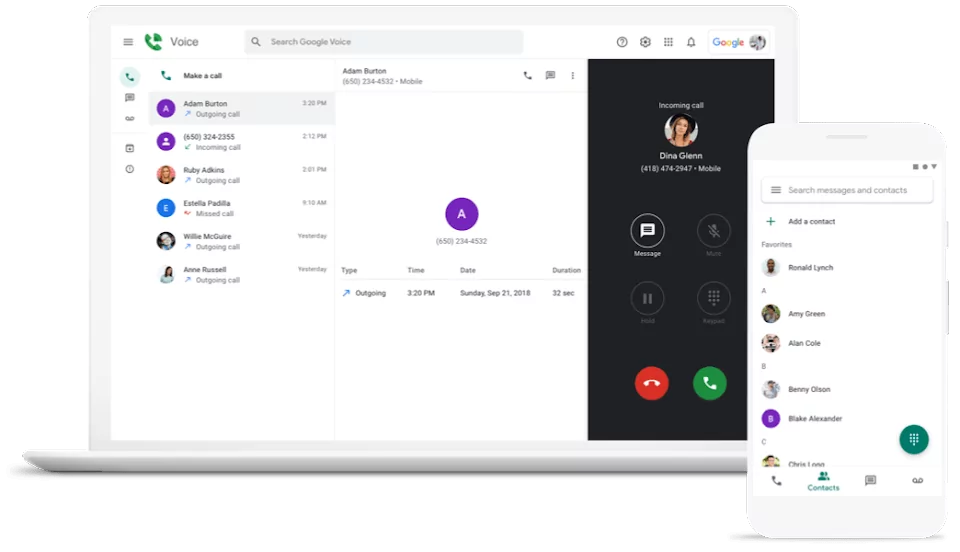
Google Voice for Google Workspace is popular among businesses already using Google Meet, Calendar, and other G Suite products. Although it offers the basic features to growing businesses (such as voicemail transcriptions and unlimited US calling), it lacks toll-free numbers, auto-replies, and any other ways to save time texting.
Speaking of texting, you should know sending texts through Google Voice is a luxury reserved for US customers. And since Google Voice doesn’t integrate with anything outside Google products, you won’t be able to automate repetitive but essential tasks.
Google Voice makes it more difficult to catch up on conversations, as all calls, texts, and voice messages are in separate folders. Plus, if you’re getting a business number so you and your team can have a better work/life balance, Google Voice may not be for you. This platform doesn’t distinguish between personal calls and business calls, which makes it difficult to know how to respond when picking up the phone.
Just check out this recent review:
“The notifications do not always work as I would like. You have to constantly check your phone to ensure you aren’t missing anything. Also, the calls coming in are not identified as Google Voice calls.” — G2
Key features of Google Voice
- Call routing
- Custom greetings
- Voicemail transcription
- Integration with G Suite
- Multi-level auto attendants
- Ring groups (requires upgrade)
Google Voice pricing

Although getting a personal number from Google Voice is free, all businesses are required to have a paid Google Workspace plan (starting at $6 per user per month) in addition to their business number.
There are three plans:
Starter
- $10 per user per month
- Access for up to 10 team members
Standard
- $20 per user per month
- Access to ring groups, multi-level auto attendants, and ad-hoc call recordings
Premier
- $30 per user per month
- Unlock all the above features plus automatic call recordings and advanced reporting
Again, keep in mind every plan requires a minimum monthly payment of $6 per user per month for Google Workspace (even if you prefer using other tools). In other words, you’re paying at least $16 per month with Google Voice.
3. Dialpad: The best solution for teams with large contact centers
Pros
- Shared phone numbers
- Speed coaching
- Call and voicemail transcriptions
- Integrations with Google Workspace and Office 365
Cons
- Upgrade required for multiple numbers per user
- Requires you to upgrade to access international texting and auto-replies
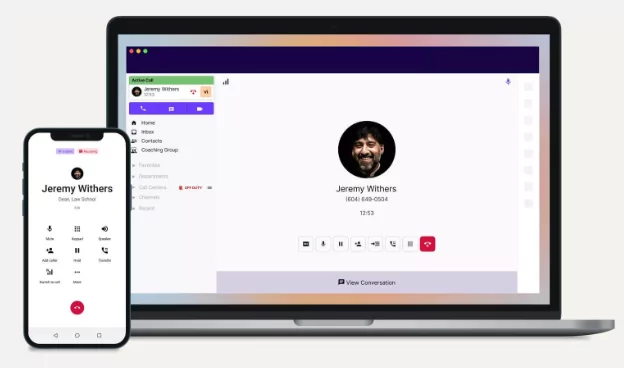
Dialpad is a VoIP business phone system tailored to call centers and larger teams. It offers an AI-based training feature for call center agents, which can be helpful in their day-to-day work. There are also ways to scale your business with business app integrations and feedback on team members’ speaking speed.
But if you’re a small business just getting off the ground, Dialpad’s extensive range of features may not necessarily streamline your workflows. You have to pay additional costs to perform basic tasks, including charges for porting multiple existing numbers. And if you want access to multiple numbers per user, be prepared to pay for another upgrade ($25 per user per month).
It takes quite a bit of time to learn how to use Dialpad — and according to past users, navigation is confusing at best.
One user said:
“The interface needs help. I have my one personal line and then calls for other departments. When I miss a call or need to go back to check a number I’m clicking around until I hopefully figure out what I’m looking for. All the different tabs for different numbers and departments and then tabs within those numbers make things confusing.” — G2
Even beyond its confusing interface, certain key features on Dialpad — including Slack and Zapier integrations, auto-replies, and international SMS — are only available on higher tiers.
This user said:
“I wish that the integrations were included at the lower price point. There’s a lot more functionality, but it gets substantially more costly to upgrade to the pro version. I really would love to be able to sync with Hubspot, but the added cost is restrictive.” — G2
Key features of Dialpad
- Analytics
- Call recording
- Auto-attendant (IVR)
- Relatively low base plan
- Call and voicemail transcriptions
- Provides AI solutions that can benefit call centers
- Integrations with Google Workspace (formerly G Suite) and Office 365
- Speed coaching, which tells you if you’re speaking too fast or too slow
- Offers unlimited calling and texting to US and Canada with any plan (if you’re based in either country)
Dialpad pricing

Dialpad pricing includes three base plan options:
Standard
- $15 per user per month
- Includes unlimited calls, SMS and MMS support, and unlimited video meetings
Pro
- $25 per user per month
- Access local numbers in 70+ countries, up to 25 ring groups, CRM integrations, and international SMS
Enterprise
- Custom monthly price
- Unlock guaranteed uptime, unlimited ring groups, and (100 user minimum)
And remember: Dialpad charges extra for porting in more than one existing phone number.
4. Ooma: The best option for large retail centers and warehouses
Pros
- Includes features like call transferring, call forwarding, and voicemail transcriptions
- Manufacturing and retail businesses may find features like paging and intercom handy
Cons
- Important features like voicemail transcriptions and texting require an upgrade
- Not all included services are relevant to small businesses
- Costly options for CRM integration, analytics, and text messaging capabilities
- No desktop app available without upgrading
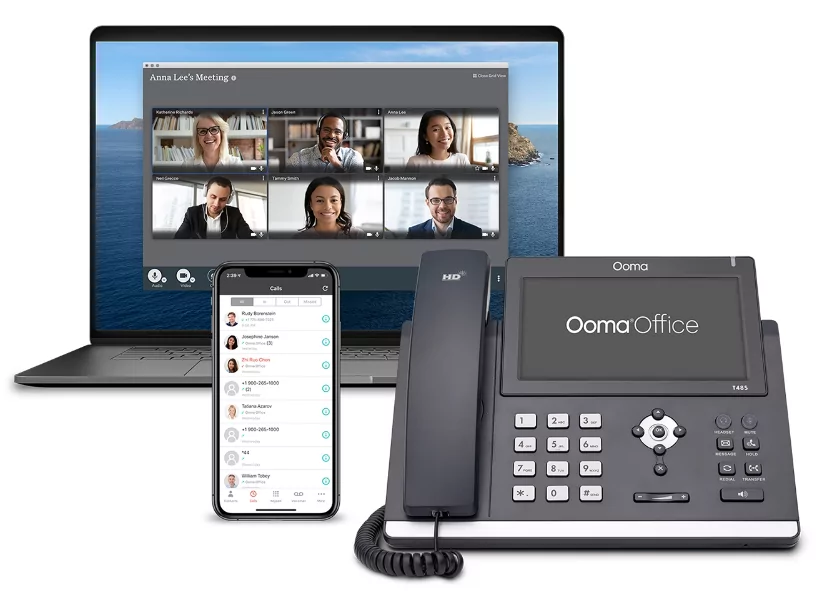
Ooma provides phone systems for both residential and business use. Teams working from a retail store may find their paging feature useful, since they can easily reach people in wide-open spaces.
The kicker though is Ooma’s small business plans come with features you may never use. You may not need analog fax machine support or IP phone paging, but you still have to pay for it on the basic plan ($19.95 per user per month).
Plus, some of Ooma’s best features are hidden behind a paywall. Important features like voicemail transcriptions and texting are only available with an upgrade ($24.95 per user per month). Even their desktop app isn’t accessible until you upgrade, which is not ideal for growing brands.
This isn’t the only area where Ooma’s system falls short. Some users also report that pricing for add-ons isn’t as transparent as they would like.
This user said:
“Due to added “‘fees,’” my bill is really 50% more than was advertised and discussed on the phone. All those fees should be bundled into a single fee that’s advertised honestly, instead of sneaking them in. I didn’t know about them until I got my first bill.” — G2
To summarize: Ooma misses the mark on many necessary features while including services like overhead paging — something few small businesses need.
Key features of Ooma
- Ring groups
- Music on hold
- Digital fax
- Call transferring
- Voicemail transcriptions (requires upgrade)
- Call recording
- Call forwarding
- Video conferencing
- Voicemail transcriptions
Ooma pricing

Ooma’s plans span from essential communications to more costly options with CRM phone integrations, analytics, and text messaging capabilities.
Check out the three tiers:
Essentials
- Starting at $19.95 per user per month
- Standard phone features along with a virtual receptionist, ring groups, and email audio attachments
Pro
- Starting at $24.95 per user per month
- Adds text messaging, videoconferencing, Ooma’s desktop app, call recording, and analytics
Pro Plus
- Starting at $29.95 per user per month
- Adds Salesforce integration, hot desking, call queuing, and advanced call management
5. Vonage: The best service with an API
Pros
- Unlimited team chat and internal messaging
- Offers texts and unlimited calling in the US, Canada, and Mexico
- Integration with 20 third-party apps
Cons
- Outdated UI
- Basic plan has limited built-in features, requiring upgrades for essential functions
- Lack of transparent breakdown for monthly costs
- Lower rates only available for teams with 20+ users
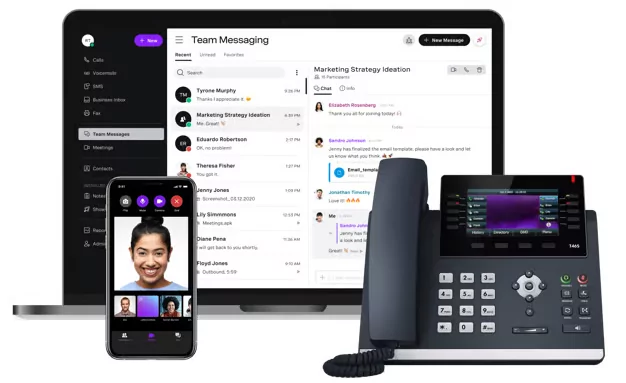
Vonage is a legacy VoIP service provider offering two different solutions: an out-of-the-box virtual phone system and a customizable API. Keep in mind their API may not be feasible unless you have technical resources in-house or are willing to pay for a developer.
Vonage’s basic plan comes with limited built-in features for calling and texting, as well as desktop, web, and mobile apps for remote businesses. However, many essential functions (like auto-attendant capabilities, call groups, and CRM integrations) require upgrades to the tune of $10 to $20 extra per user per month.
You may notice a surprising amount of extra fees associated with Vonage, including the cost of extensions, toll-free numbers, and add-ons like automatic call recording. Combined with the fact that most of these features come standard with other providers, Vonage may be an expensive option for growing brands and enterprises.
Still want to give Vonage a try? Be prepared for a steep learning curve. Some users report that customer service isn’t very helpful with onboarding.
One user said:
“The Sales Rep dropped us like a hot potato once the contract was signed and was not the least bit helpful in getting us to the right department. Training was horrible. They flew past the bare essentials and referred me to how-to videos for the rest. I wish I had known then what I know now. I would have looked elsewhere, which is what I am doing now.” — G2
Key features of Vonage
- Unlimited team chat
- Internal team messaging
- Mobile and desktop apps
- Texts in the US and Canada
- Unlimited calling in the US, Canada, and Mexico
- 20 third-party integrations (like Clio or the G-Suite)
- SMS in the US (API required to send MMS messages)
Vonage pricing
Vonage doesn’t offer a transparent breakdown of your monthly costs. Essential features like call recording and auto-attendants require upgrades or add-ons, and you may run into hidden fees depending on the plan you’re on. The amount you pay on Vonage’s base plans also varies based on your team size with smaller teams paying more per user. Here’s how much their plans cost for teams of 1-4 users:
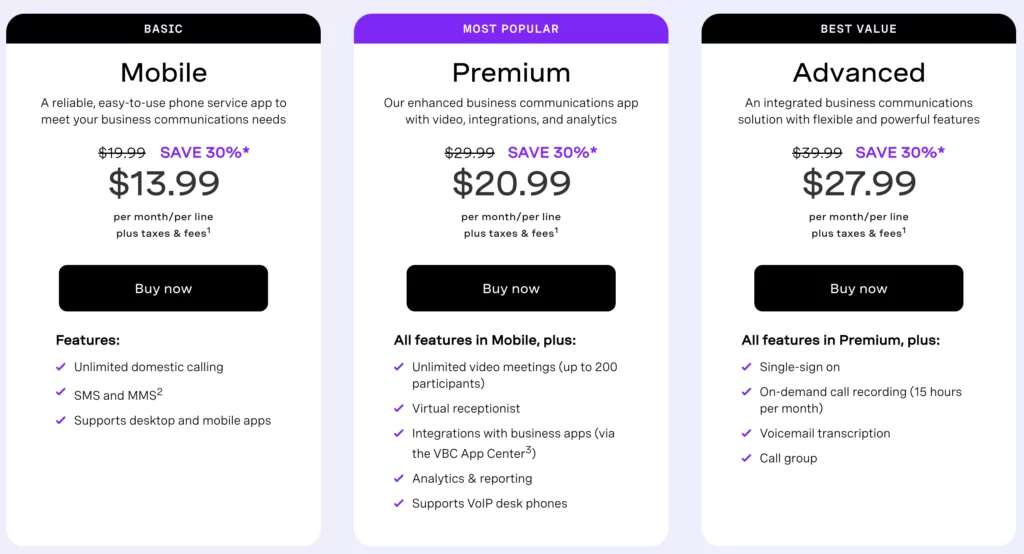
Mobile
- $13.99 per line per month
- Includes 24/7 customer support
Premium
- $20.99 per line per month
- Unlock auto-attendants and CRM integrations (HubSpot, Microsoft Dynamics, Salesforce, and the like)
Advanced
- $27.99 per line per month
- Access call recording (15 hours max) and voicemail transcriptions
Keep in mind Vonage requires a one-year minimum contract to get started. It also doesn’t offer a free trial for your team, so you can’t try before you buy.
6. Grasshopper: The best choice for teams that prefer multi-digit phone extensions
Pros
- All users can access 100% of Grasshopper’s features
- Provides local US, Canadian, and toll-free phone numbers
- Unlimited calling in the US and Canada
Cons
- Higher-tier plan limited to five phone numbers
- Expensive monthly costs, not scalable with business growth
- Lack of key business needs like integrations and shared numbers
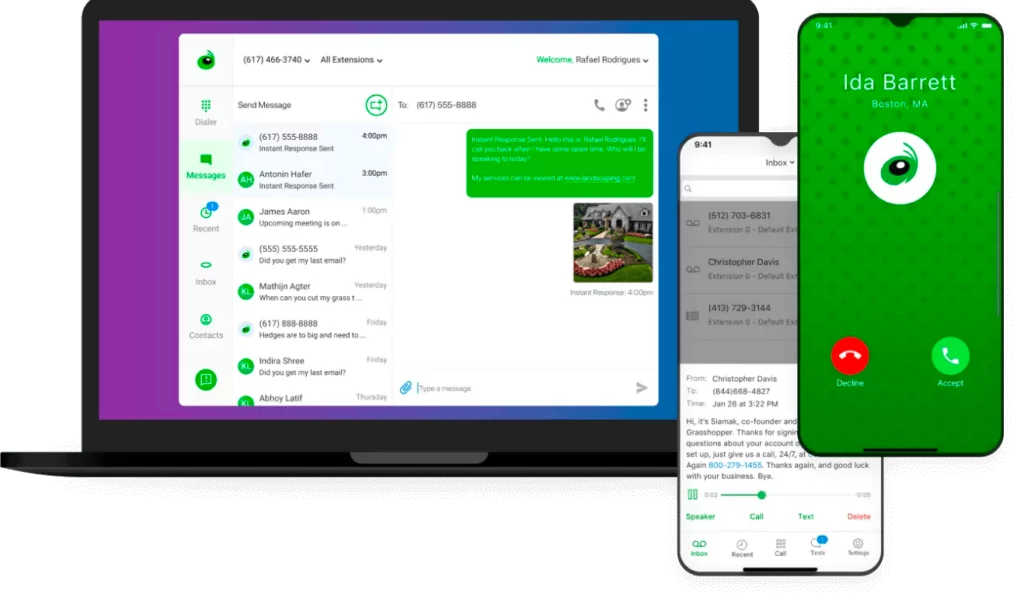
Grasshopper is a legacy small business phone system provider with an unconventional pricing model. All users can access 100% of Grasshopper’s features, although higher-tier plans come with extra phone numbers and extensions.
Grasshopper’s most expensive plan is limited to just five phone numbers, which may require switching to another provider as your business grows. Plus, all additional phone numbers cost $10 per month each, which is more than twice the cost of additional numbers on more competitive platforms.
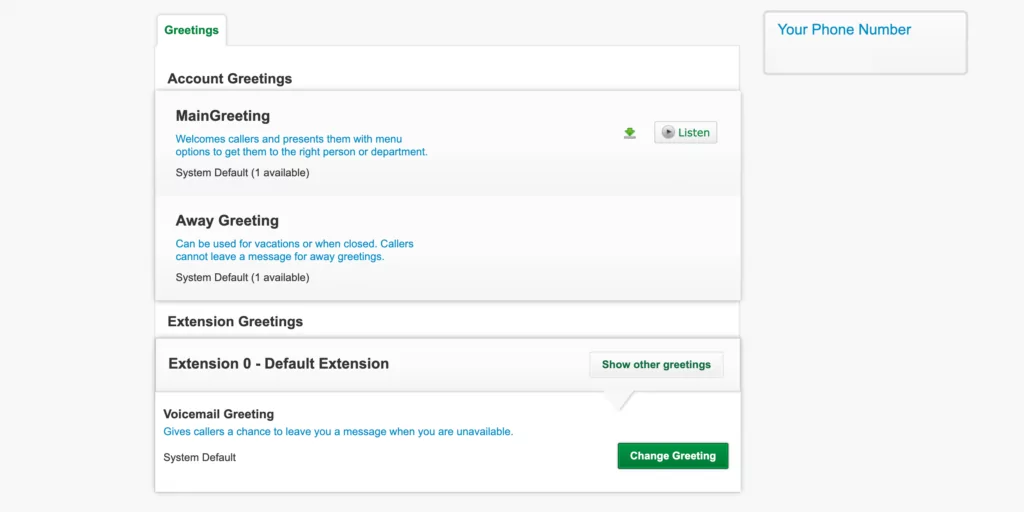
Plus, many users find Grasshopper’s UI to be outdated and clunky at best.
One user said:
“The Grasshopper platform was slow, visually outdated, and the smartphone app had multiple glitches while in use – it was often easier to close the app and start over when attempting to make a second or third call in a row.” — G2
Another user found it so confusing that they decided to use their personal phone numbers for outbound calling.
This user said:
“It’s not the easiest to use for outgoing calls. We typically just end up making calls from our direct phone numbers instead of bothering with using Grasshopper for outbound calls.” It leaves you wondering, ‘What’s the point?’” — G2
And even while you’re paying a premium to access all of Grasshopper’s functionality, you still can’t plug into integrations, use shared numbers, or record any of your calls automatically.
Key features of Grasshopper
- Local US, Canadian, or toll-free phone numbers
- Business texting support (MMS not available for toll-free numbers)
- Unlimited calling in the US and Canada
- Call forwarding
- Custom greetings
- 24/7 customer support
- Voicemail transcriptions
- Virtual fax
- Call reporting
- Incoming call control
- Simultaneous call handling
- Free porting for your existing number
Grasshopper pricing

Grasshopper bases each of its plans on the number of phone numbers and extensions you get. Monthly costs are expensive — especially for a service not built to scale with your business.
- True Solo: $14 per month for one phone number and one extension
- Solo: $28 per month for one phone number and three extensions
- Partner: $46 per month for three phone numbers and six extensions
- Small Business: $80 per month for five phone numbers and unlimited extensions
10 features you should expect with your business phone number provider
You’re looking for a robust business phone system that checks all the boxes. This means you should look for a modern platform covering these nine features at a minimum:
- Mobile and desktop apps: By taking business calls and texts with you wherever you go, you can maximize productivity anywhere you choose to work.
- Shared numbers: You should be able to add multiple team members to the same business phone number so everyone can split the responsibility for incoming calls and texts.
- Call recordings: By storing records of past conversations, you can follow up faster and train team members to provide the best experience possible.
- Integrations: The best business phone systems allow you to connect with the tools you’re already using (like CRMs, communication apps, and automation platforms like Zapier).
- Voicemail transcriptions: Keeping voicemail transcriptions in addition to call records can help you get the right context and assist customers more quickly.
- Phone menus: You can easily route callers to the right person or department while looking more professional (without needing a phone receptionist on standby).
- International calling and texting options: You need ways to reach customers overseas as your business grows and your network expands.
- SMS and MMS support: In addition to basic texts, you need a system that supports texting GIFs, PDFs, images, and more.
- Auto-replies: You can instantly respond to missed calls or texts to set expectations and delight your customers.
- Artificial intelligence: Your business phone should make it easier for you to review calls with your customers with AI-generated summaries and transcriptions.
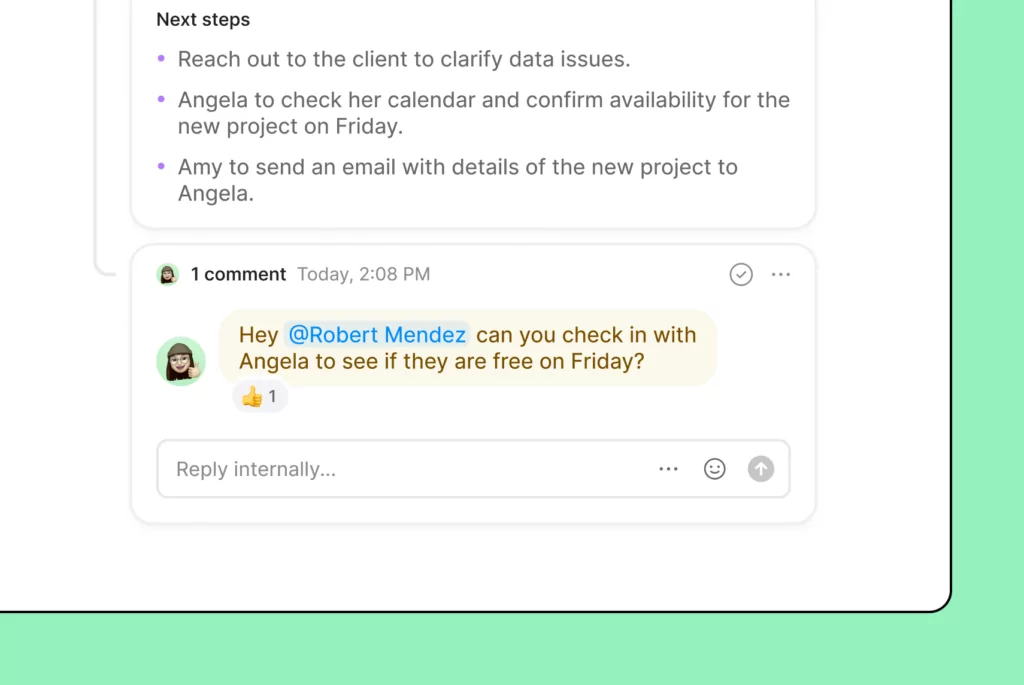
Do you really need a business phone number? Signs point to yes
If you’ve been using your personal phone number for work up until now, you’re missing out on greater peace of mind. Here are four ways getting a business phone number can set you up for success.
1. Get more work/life balance
When you’ve clocked out for the day, the last thing you want is a personal cell phone that won’t stop ringing with business calls and texts. A dedicated phone number for company use lets you set business hours to control when clients can reach you. After hours, anyone trying to reach your business phone line instantly hears an away voicemail greeting — no need to manually deny calls or put personal time on hold.
Getting a business phone number also allows you to send calls to voicemail with “Do Not Disturb” mode whenever you’re busy without affecting your personal calls.
2. Keep your personal number private
Tired of getting spam calls on your personal telephone number? Small business owners and solopreneurs can protect their privacy by sharing a business number on their website, social media pages, and other marketing channels instead of their personal numbers. As your team grows, you can assign business phone numbers to your team members so they can contact clients without sharing their private contact information.
3. Always know when incoming calls are for work
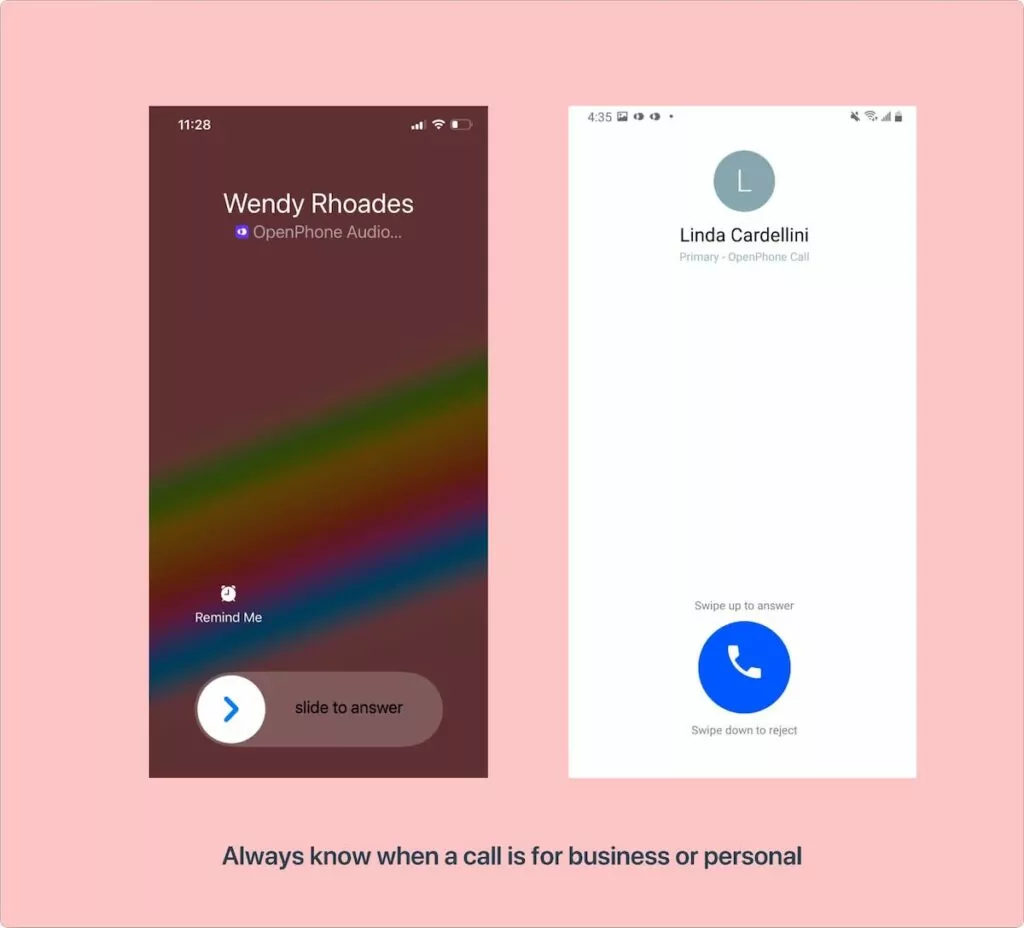
If you’ve been using your personal phone number for work up until now, you’re missing out on greater peace of mind. By using the right business phone solution, you don’t have to worry about your team accidentally answering a call unprofessionally because they thought someone was calling their cell number. Everyone on your team can see whether an incoming call is for work or business, which means they always start conversations the right way.
4. Take advantage of more powerful phone features
Most providers that offer phone numbers for companies support more powerful features than those on your mobile phone. If you get your business phone number through a VoIP provider, you can set up phone menus, professional voicemail greetings, and integrations to help you deliver a professional phone presence and save your team time.
Keep reading to learn more about VoIP phone systems and why you should choose one when getting your business number.
5 key reasons why VoIP phone services are better than landlines
VoIP phone services let you call and text using an internet connection. With these services, you can get a VoIP number — also known as a virtual phone number — you can use from anywhere by hopping on your computer, smartphone, or tablet.
So what are the big differences between VoIP and landline phones? Here are five reasons why VoIP is the obvious choice.
1. Work from anywhere
VoIP phones let you use your business phone number anywhere you go as long as you have a solid internet connection. All you need to do is open your VoIP provider’s platform on whatever device you’re using, and you’re all set to make and receive phone calls and text messages.
When you use a landline, your phone number is tied to that device only — and your device is a desk phone stuck in your office at all times. Tying your number to a desk phone can lead to many missed calls while you’re on the go (unless you set up call forwarding, but text forwarding or texting from that number likely isn’t possible).
2. Use your existing devices
Brand-new devices can be a costly investment and a hassle to set up. When you sign up for a VoIP phone service, your team members can access their business phone numbers from any existing device, including a company laptop or their own iOS or Android phone. There’s no learning curve required to get started with the right phone system.
The best VoIP services offer desktop, browser, and mobile apps for your business number compatible with a wide range of devices for maximum flexibility. On the other hand, you always need new, dedicated hardware to set up a landline number — and it can take time to familiarize yourself with desk phones.
3. Get a more cost-effective solution
With VoIP phones, you don’t just save on upfront business phone system costs. Virtual number plans are typically more affordable than mobile phone plans, which cost an average of $127 per month. Plus, subscribers can get software updates just by updating the platform. If you ever want features your current plan doesn’t support, you can simply upgrade your plan instead of purchasing brand-new phones.
While landlines often require ongoing maintenance by IT professionals, VoIP service providers take care of all the maintenance for you.If you do experience any issues with your business phone number, they should offer free customer support to subscribers.
4. Send business texts from your computer or smartphone
Texting isn’t possible from landline phones. However, VoIP phones allow you to send texts from your computer, smartphone, or tablet — whichever device is most convenient for you. This way, you can build relationships through text and save time while communicating with customers via SMS or MMS.
5. Set up in one day
Landlines come with complex setup procedures that require the help of an IT professional. But with a virtual phone service, you can easily sign up for an account online and get your business phone system up and running the same day.
Whether you choose a VoIP service or another phone provider, read on to learn how you can use OpenPhone to simplify customer calls.
6 ways OpenPhone helps your business run smoother and makes your customers happier
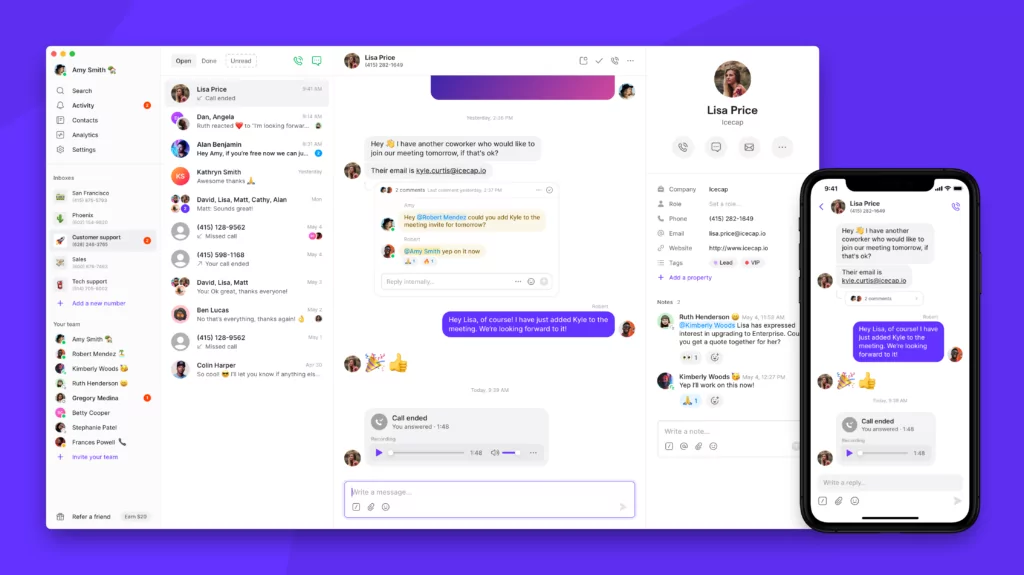
Great service providers give you far more than a phone number for company calls and texts. They can also help your business grow and scale.
Here are six reasons why you should choose OpenPhone as your virtual business phone number provider.
1. Easily scale your phone system
OpenPhone makes it easy to grow your business and your team. You can get as many US, Canadian, or North American toll-free numbers as your team needs.
Each user on your OpenPhone plan comes with one free number. You can get additional phone numbers for $5 per month each.
2. Work together
Have a team and want to work together from a shared inbox? You can do that too.
OpenPhone allows you to share business phone numbers with your team and help each other answer calls and texts. You can also comment in threads (visible only to your team) to collaborate on conversations and assign tasks to teammates. That way, you can ensure you’re providing a great customer experience.
3. Save both your time and your customers’ time
If you want to work efficiently, help more clients, and create the best customer experience possible, you need a business phone system that lets you automate texts. OpenPhone lets you set up auto-replies so your current and potential customers always get a fast response. For example, if you want to make sure clients aren’t left hanging when you miss a call, you can automate texts for callers who don’t leave voice messages.
Customize your auto-replies with content that makes sense for your customer base. For instance, if most of your calls are appointment-booking requests, you can include a calendar link in your auto-reply to save time for your customers and your team. You can also set up Zaps based on specific triggers, like an appointment confirmation when a customer books a meeting.
When you’re available to respond to your clients, you can continue saving time by using snippets — text message templates you can create and save — so you can simply fill in the blanks instead of typing out the same messages over and over again.
Curious to learn more about using auto-replies for your business? Check our guide to business text message templates for specific examples you can use.
4. Schedule texts based on your contact’s time zone
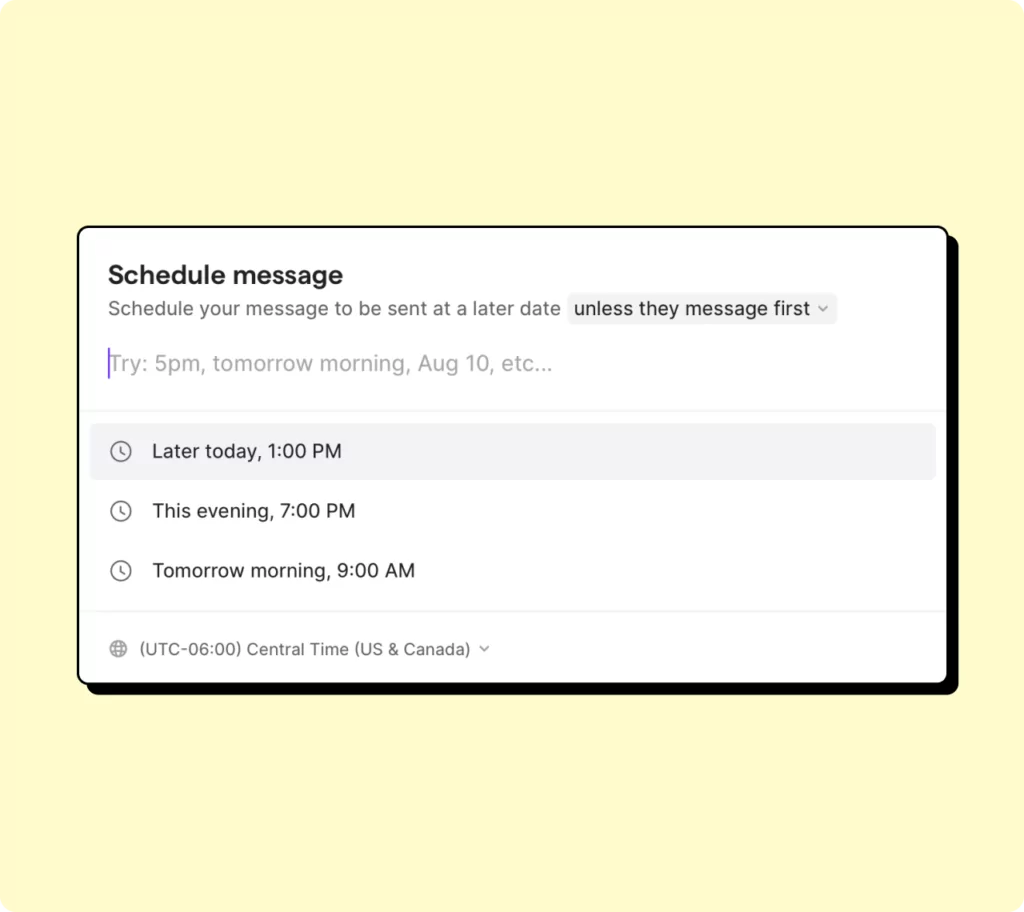
With OpenPhone, you can schedule a text in your contact’s time zone without doing any math. OpenPhone shows your contact’s local time zone based on their number’s area code so you can quickly queue up your message for the right moment.
Plus, if you’re sending a follow-up message, you can add a scheduling condition that deletes your message if your client texts you first. That way, you can avoid any confusion.
5. Follow up faster
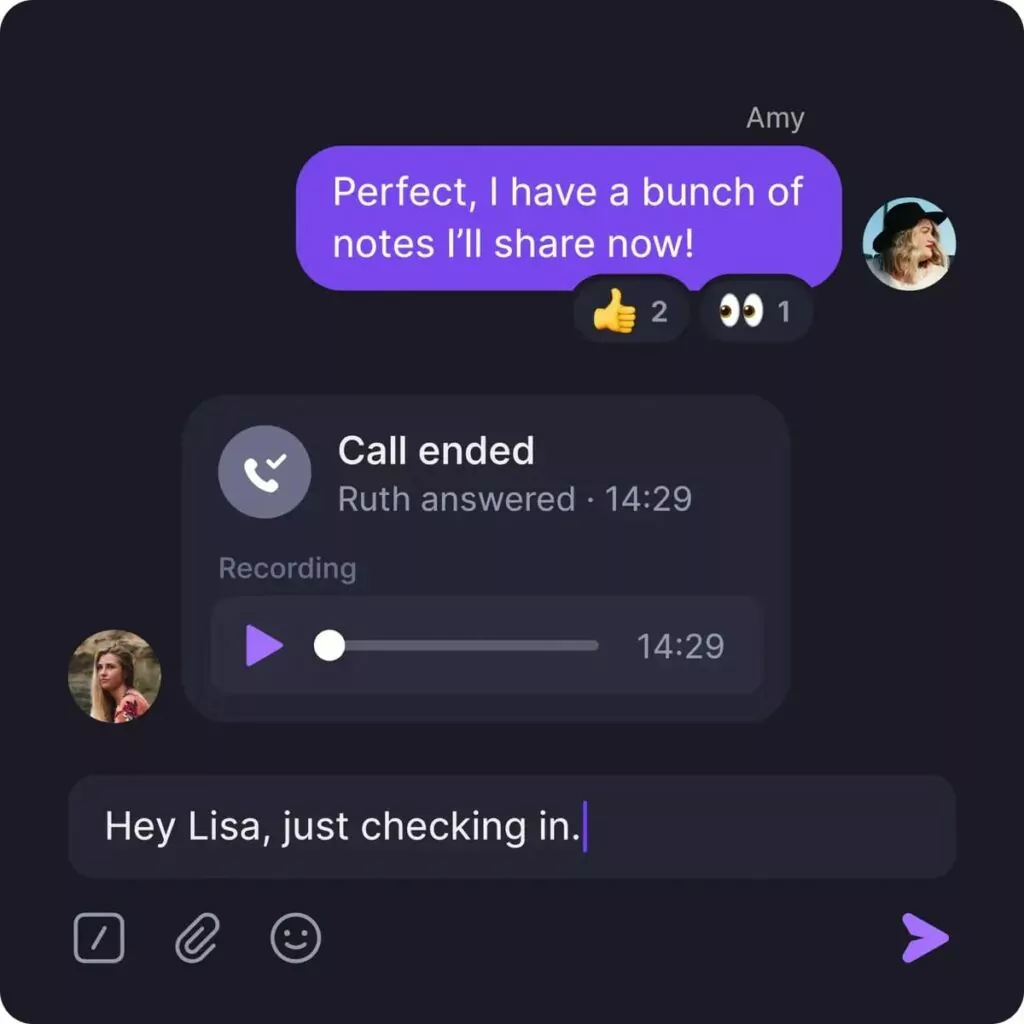
OpenPhone’s inbox displays all phone communication with a contact in a single view so you can catch up on conversations and follow up faster. You won’t have to jump between inboxes to see all your call recordings, voice messages, and texts, which means it’s easier to keep up with all your communications (and harder for conversations to slip through the cracks).
6. Continually improve your customer experience
Improving the customer experience is easy with every OpenPhone plan. Using our free call recording feature, you can save and replay unlimited calls to ensure you’re delivering a great experience and identifying where you can improve. Or, you can use call recordings to train new team members with examples of quality support.
OpenPhone also supports MMS messages, allowing you to send photos, videos, and GIFs to sprinkle in delight and provide personalized service to every client.
Get a business phone number today with OpenPhone
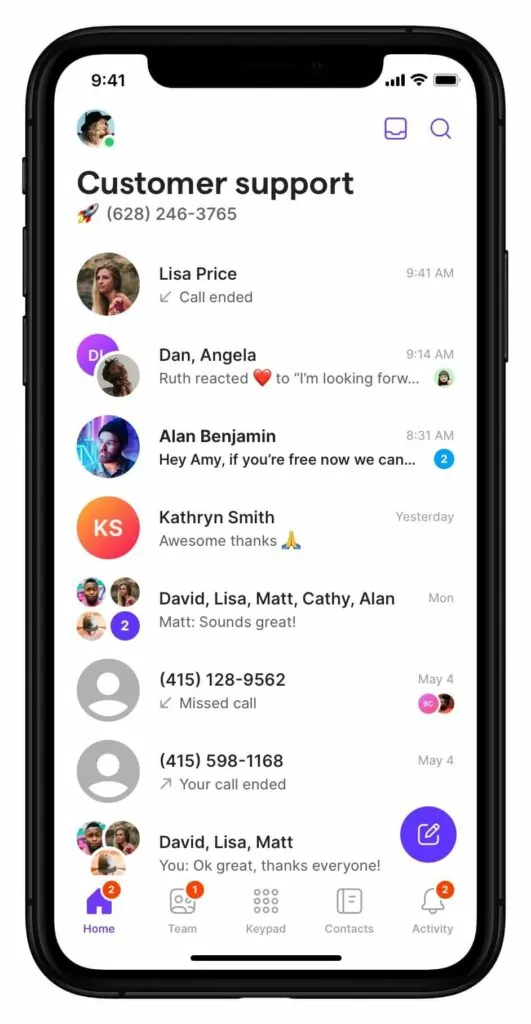
A dedicated business phone number can help you protect your and your team’s privacy, maintain a work-life balance, and operate more smoothly than ever. Choosing the right phone service provider is key if you want to save time and give customers the best experience possible.
Compared to landlines, VoIP services are more cost-effective solutions that allow you to work from anywhere, on any device. And OpenPhone is the business phone system that can scale with your company. With every OpenPhone plan, you can access features like:
- Free unlimited calls, SMS, and MMS in the US and Canada
- Unlimited US, Canadian, toll-free, and vanity numbers
- Free phone number porting
- Shared phone numbers
- Auto-replies, snippets, and scheduled texts
- Call recordings
- Voicemail transcriptions
- Custom business hours, voicemail greetings, and phone menus (auto-attendant)
- With upgrades, you can unlock features like call transfer, CRM integrations, and call analytics to further improve your business communication
With upgrades, you can unlock features like call transfer, CRM integrations, and call analytics to further improve your business communication.
See for yourself why thousands of businesses use OpenPhone — and get a business number in minutes. Sign up for a free, seven-day trial of OpenPhone.
Frequently asked questions (FAQs)
You can get your business phone number by signing up with a business phone number provider.
You can choose between a local, toll-free, vanity, or VoIP phone number.
OpenPhone is a VoIP phone service provider and we offer you the option to choose a local or toll-free number when you sign up with us. You can also add as many numbers as you want to your OpenPhone account.
Yes, you can create a business phone number for free. OpenPhone offers a free seven-day trial where you can get started with your business phone number.
To continue using your business phone number, you’ll have to sign up for a paid plan.
With VoIP phone providers, there is often no cost to set up a business phone number. You simply sign up with your preferred phone provider and can get started using your business phone number with your existing devices.
With non-VoIP phone providers, there are equipment and installation costs to consider to set up a business phone number. These can range from $400 – $1000 per user. If you want to optimize for affordability, we recommend choosing a VoIP provider for your business phone number.
Yes, you can get a business phone number on your personal phone. You can do so in two ways:
1. You can get a separate mobile number from your service provider and add it as another SIM or e-SIM to your personal phone.
The problem with this method is that you won’t have the ability to share your business number with your team to call and text your customers collaboratively. You also can’t take advantage of powerful features like phone menus, voicemail greetings, and integrations to deliver a professional experience to your customers.
2. You can get a business phone number from a business phone service provider like OpenPhone. Sign up for OpenPhone and get started with your business phone number in minutes. You can access your business phone on any device and keep it separate from your personal text inbox.
OpenPhone also helps your team collaborate on your customer communications and provides features like texting auto-replies, call recordings, and CRM integrations so that you can focus on building deeper relationships with your customers.
